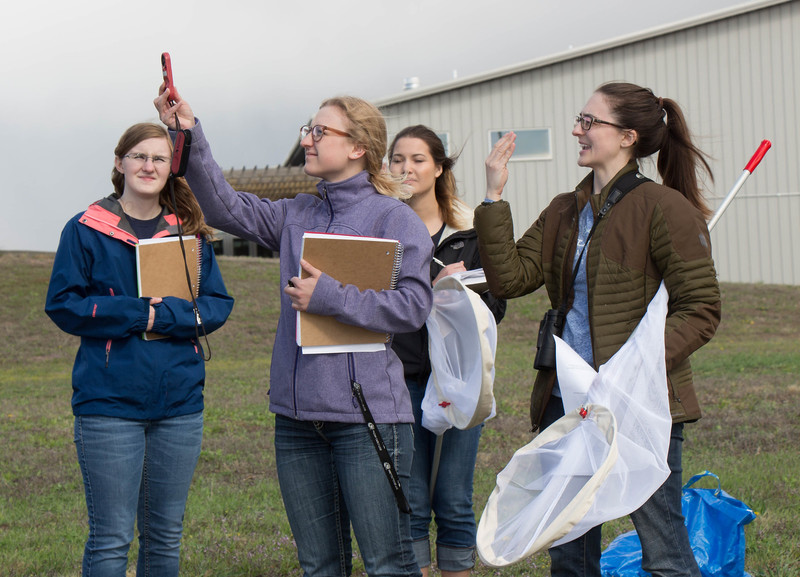Kral-O'Brien explains symbiotic relationship

CHADRON – Practitioner-in-Residence Dr. Katherine Kral-O'Brien spoke about the symbiotic relationship between rangeland and pollinators in a presentation April 24 in the Mari Sandoz High Plains Heritage Center. Kral-O’Brien taught an eight-week class at Chadron State College this semester: Special Topics in AGRI: Pollinator Ecology (AGRI 460), funded by the Bill and Virginia Coffee Family Foundation Grant.
She said humans should care about pollinators for many reasons.
“They assist in plant reproduction, plant diversity, and improve seed sets. They are also bio indicators, a kind of canary in the coal mine regarding our environment," Kral-O'Brien said.
Although past research looked at pollinators mainly as a food source for bird species, in the last 20 years, pollinators have been studied in their own right, Kral-O’Brien said.
Her doctoral research at North Dakota University focused on three species of butterflies: Dakota skipper, listed as a threatened species, and monarch and regal fritillary, both proposed for listing.
She explained that while juvenile and adult pollinators need forbs, or flowering plants, for shelter and food, rangelands also need pollinators and the plant diversity they promote.
“Diverse, functioning rangelands improve our ability to handle short-term and long-term stress and disturbance,” she said.
Kral-O’Brien explained how landscape composition and configuration play a major role in determining the quality of habitat for pollinators.
“All range can be ideal. Pollinator habitat next to a mowed field, cropland or woodlands all offer pros and cons. For some pollinators, variety of forbs is more important than density. There are many layers of complexity to consider before choosing a management option," she said.
She discussed management options to assist with conserving pollinator habitat including: Idling, haying/mowing, grazing and fire. In the past, idling and haying were considered the main options, however grazing and fire have gained popularity in recent years. Idling, while it’s free, can result in homogenized acres of single species, she said. The benefits of grazing depend on timing, intensity, and the type of animal that is grazing. For example, sheep eat more forbs than cattle do, possibly decreasing the number of pollinators, according to Kral-O’Brien.
Fire, in controlled areas, preserves unburnt land nearby for pollinators to find refuge.
"After fire, if the extra nutrients in the soil results in healthier plant and good nectar which could actually increase pollinator reproduction," Kral-O’Brien said. "You have to know the land and know the species you're trying to conserve. Overall, the best practice is to maintain large tracts of grasslands, reduce invasive species and promote plant diversity.”
Category: Campus News, Range Management, Sandoz Society
